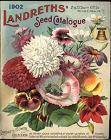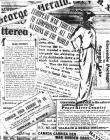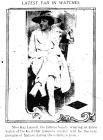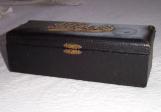1
The Times 1900-1930Our story centres around the yearly round of activities in the year 1915. However, Ed Seebach and Al Huble began their business at the Giscome Portage, "Seebach and Huble General Merchants", in 1904. They carried on with the southern terminus of the portage, "Huble Homestead" as the headquarters. In 1919 a road went through to Summit Lake ending the need to move freight over the portage. Seebach and Huble still continued business in Prince George, Summit Lake and McLeod Lake but the Homestead site was only used in the summer after this time. The site was sold in the late 1920's to Josephine Mitchell and became a dude ranch in the decades after 1930. The WM Ranch collected a very large amount of land and had many hundreds of head of cattle. Today the Huble Homestead/Giscome Portage Heritage Society operates the Site for the education and enjoyment of the community and visitors from afar.
Here is the story of the times and changes during the years 1904 to 1930.
2
This seed catalogue from 1902 is the kind from which Annie would have ordered her supply1902
Huble Homestead/Giscome Portage on the Fraser River, North of Prince George, British Columbia, Canada

3
Here is a collage of newspaper ads ca 1915. It was a very eventful year.1915
Fraser-Fort George Region, Prince George Area British Columbia, Canada

4
COMMUNITY EVENTS OF THE TIMESThe Huble family did not live in a vacuum; they lived in an exciting and yet anxious time in a vibrant community of the north.
Politics
Politics were high on the agenda for the citizens of Prince George in 1915 as they had both a civic and provincial election in this year. The Fort George Herald had the following to say in their Friday, March 19th, 1915 edition .
"In the midst of the greatest war the world has ever known, causing wid spread suffering, and ruin among not only the combatant nations but neutral peoples as well - when business and trade generally is thoroughly disorganized - initiative and progress at a standstill, developments in the political arena of Canada have suddenly projected themselves upon the people, and for three or four months questions of state will occupy the thoughts and actions of the electorate.
In British Columbia, elections to the next Provincial Parliaments have been called.
Next will come to this section locally the election of officers, to serve the new municipality of Prince George, in May.
In June it is expected will come Dominion Elections for members to the National Parliament.
All together the people of Canada are having troubles of their own. Never before have world wide conditions effected a country's future to such an extent. However, the feeling of that Great Future permeates the country, despite the present disturbed state, and in consequence boldness of action and immense plans continue to occupy the minds of the people despite all impediments. Courage, farsightedness, faith and hope will not be turned aside.
At this juncture the British Columbia Government has thought it the part of wisdom to consult the people about various questions effecting this province. In consequence the people are suddenly plunged in the midst of political meetings and conventions to nominate candidates for the next Provincial Parliament. These elections were scheduled to be held April 10th, but at the present some doubt exists as to the correct date"
On May 21, 1915, it was announced in the same paper that W.C. Gillett was elected first Mayor of Prince George and on December 18 of the same year, there was an article run announcing that the Honorable W.J. Bowser was elected to the head of the province as premier.
Ladies Fashion
Hats:
A fashionable woman in 1915 wore flat picture hats of leghorn, or charming poke bonnets of crepe or chiffon. Small flat bows of braid like ribbon was seen on what were considered smart little hats.
Dresses, Skirts and Suits:
Evening gowns generally had no sleeves, or very tiny ones, while bell sleeves and bishop sleeves were worn for day dress as well as for gowns. Jackets corresponded nicely with a full skirt for daytime business. Skirts that were worn were considered short for the period, and were a few inches above the ankle. The waistline for the skirt was at the normal waist; yet, a high waistline, which was just under the rib cage, was considered very fashionable. Loosely fitting three-quarter length suit jackets were the considered most fashionable.
Blouses:
A shirred yoke and collar of organdie and bodice of mull or lawn, was considered 'in vogue'. Checked silks in snuff colored browns, green-blues and yellows and blacks were novelties in dull toned effects. Some of the new blouses were made with detachable collars, either a high throat, or a turned down neckline to show the throat.
Miscellaneous:
Many women were not fancying the military novelties introduced shortly after the commencement of World War I. The Prince George Herald commented that this was, "evidence that civilization is progressing in spite of the barbarous slaughter of the big war." Ladies fashionable footwear included long lace up boots.
Annie Huble wore gloves in the year 1915. One of the Huble Homestead artifacts currently accessioned with the Huble Homestead/Giscome Portage Heritage Society is her glove box.
Economics
The price of goods in Fort George in 1915 was advertised in local papers. This information will give the reader an indication of the price of these goods during this year. The price of food at Lambert's Grocer's on George Street in Prince George was advertised in the August 1915 Fort George Herald.
"Ogilvie's Centennial Flour 98 lbs. $3.15"
"Wagstaff's Raspberry Jam 4 lbs. $ .75"
"Blue Ribbon Coffee 25 lbs. $5.00"
"Clover Leaf Salmon (per tin) Tin $ .221/2"
"Van Camp's Pork and Beans Tin $ .11"
"McLarens Cheese $ .25"
"Corned Beef Tin $ .271/2"
At Kennedy and Blair & Co., Limited, there were grocery specials advertised as well.
"Potatoes 100lbs. $2.25"
"Onions 7lbs. $ .25"
The price of Ladies and Children's Wear at Art Millinery in South Fort George was advertised in the Prince George Herald. Their November 22nd, 1915 sale included their entire stock, which they said was greatly reduced.
"American Lady Corsets $6.50; A La Grace Corsets $2.60 69." (note the substantial difference, in the price of these two corsets).
"Hose Supporters .30 cents; Sanitary Belts .25 cents; Ladies Silk Hose .60 cents; Silk Petticoats $2.40; Cashmere Waists $2.35; Satin Waists $1.60; Ladies All-Wool Gloves .30 cents; Ladies Long Dark Black Silk Gloves .95 cents; Ladies Kid Gloves $1.45 69."
For the savvy Christmas shopper, The Rexall Drug Store in Prince George offered some hints when they advertised in the December 10th, 1915 Prince George Herald.
"USEFUL GIFTS FOR CHRISTMAS"
"For the Ladies: Perfumes from 50 cents to $7.50; Fountain Pens from $2.50 to $6.00; Ebony Hair Brushes from $1.50 to $5.00; Ebony Mirrors with heavy bevel $3.75; Brush and Comb Sets from $3.50 to $10.00; Christmas Stationery from .50 cents to $ 2.00; Coffee Percolators $12.00 ."
"For the Men: Cigars by the box from $1.60 to 4.50; Pipes from $1.75 to $6.00; Safety Razors from $1.00 to $5.00; Collar Bags from $1.25 to $2.00; Cigar and Cigarette Cases from $1.50 to $5.00; Military Brushes from $2.50 to $6.00 ."
During the period of the Grand Trunk Pacific railway construction the Hudson Bay Post in Fort George flourished. However, with the commencement of the World War in 1914, business declined to a point where the Hudson Bay Post had to close in May of 1915. The company had operated a post in Fort George for more than a century.
World War I
In August 1914 World War I broke out in Europe. In the year 1915, the newspapers of Fort George covered this war almost on a weekly basis. On July 2nd, 1915 the Prince George Herald ran an article about the Zeppelins which dropped bombs in Europe .
Theatre
By the end of 1914, Prince George boasted a total of three theatres. The Dreamland Theatre was moved from South Fort George and was set on a site on George Street. Theatre announcement for the Fort George Herald, 1915
Medicine
New settlers on the frontier at the turn of the century who were the unfortunate victims of an accident either lived or died with the rudimentary care that was available to them. Infected wounds were treated with carbolic antiseptic, cuts were dusted with iodiform (a strong smelling yellow powder), bromo and quinine were used as cold treatments and mustard plasters were used to relieve bronchial congestion. Virtually everyone kept a bottle of rum or whisky strictly for medicinal purposes .
Al Huble had his own recipe for cough medicine written down at the close of his 1910 diary.
"cough medicine: 2 o/ of oil of tar, 2 oz of essence of peppermint, 1 pint of blackstrap, wordls balm, liniment, alcohol 95% 8oz, spirits of turpentine 8 oz, oil of sassafras 1 oz, oil of Penny royal 1 oz, oil of ariganum 1 oz, tinct. of armiea 1 oz, tinct. of cantharides 1 oz. tinct. of camphor 1 oz, aqua ammonia 1oz and finally, British oil 1 oz. Mix thoroughly and use as a liniment. For internal use, take one half a teaspoonful for an adult. Children, 15 drops."
In the 1909 book that Ellen White wrote called "Ministry of Healing", she argued that the practice of taking poisonous drugs at that time would not cure diseases. Furthermore that practice simply was carried out to relieve the anxiety of pain and inconvenience. She summarized her best advice:
"People need to be taught that drugs do not cure disease. It is true that they sometimes afford present relief, and the patient appears to recover as the result of their use; this is because nature has sufficient vital force to expel the poison and to correct the conditions that caused the disease. Health is recovered in spite of the drug. But in most cases the drug only changes the form and location of the disease. Often the effect of the poison seems to be overcome for a time, but the results remain in the system, and work great harm at some later period
However, on the frontier, often many chemical concoctions were administered, and some were poisonous. Fortunately, following the arrival of Father Coccola into the northern frontier, the ministry to the sick was improved. According to Reverend Runnals, Father Coccola had medical training and was in a position to minister to the sick, both spiritually and physically.
Evidence of homemade concoctions being offered has been documented. When Lucille Adams, a friend of Annie Huble's wrote to her friend in California from the Peace River area, she shared one of her experiences concerning this issue. She wrote.
"I am a little weak yet, but gaining daily; and soon I'll be about again. All went well until thanksgiving, when I fell on the ice. I was taken terribly ill and nearly died. We are 300 miles from a doctor. Every old prospector for miles around brought his box of pills and best advice, but only by the application of steaming hot towels day and night was I kept alive."
The Railway Arrives
Freight and passenger service opened for the Grand Trunk Pacific Railroad connection between Prince Rupert and Edmonton in February of 1915. The completion of this connection was a highly anticipated event, which had been under construction for many years. The Fort George Herald announced this event in their January 21st, 1915 paper. This article read:
"Passenger and freight service to Prince George on the Grand Trunk Pacific line will be opened on or about February 1, according to advices received by the Herald this week."
5
Ladies Day suit and boots, 1915. (from the Prince George Herald, July 10, 1915)1915
Fraser-Fort George Region, Prince George Area British Columbia, Canada

6
An original artifact, Annie Huble's glove box, now sits in the main floor bedroom1915
Huble Homestead/Giscome Portage on the Fraser River, North of Prince George, British Columbia, Canada

7
Annie Huble's Glove BoxA business card from a fashionable store in Paris, France was found within Al Huble's desk. Annie Huble and the girls were always dressed very well and it is likely that this exquisite glove box held a fine pair of gloves for Annie Huble.
Annie Huble owned this glove box, which would have been stored in the master bedroom of the Huble home. This is an original artifact and can be viewed in the main floor bedroom of the restored house at the Huble Homestead Heritage Site.
8
Menu listing the prices for meals in local restaurants in 1915.1915
Fraser-Fort George Region, Prince George Area British Columbia, Canada

9
The Fort George Herald advertised one of the local restaurants menu's in 1915. This menu listed the current prices for meals in local restaurants in this year.10
Bottle found during the excavation beneath the Huble House in 2003.1915
Huble Homestead/Giscome Portage on the Fraser River, North of Prince George, British Columbia, Canada

12
The headlines of the Saturday October 30th , 1915 Prince George Herald read, "FUR BUSINESS PROMISES TO YIELD GOOD PROFITS". This article spoke of how the fur industry of Canada was one of the greatest resources of the country, supplying the market economy of the world's fashion industry with the furs it required.There was much talk of how the fur bearing animals were becoming extinct, due to over harvesting for the fur industry. However, this newspaper article in the Prince George Herald denied that claim, and promised a good year for the trapper's in New Caledonia.
13
The Herald remarked on the growing fur market in this November 1915 article1915
Huble Homestead/Giscome Portage Society Archives, Prince George, British Columbia, Canada

